What is Attention? What are the types of Attention?
Attention is defined as a person’s ability to concentrate on a particular stimulus in an environment without getting distracted. Our attention systems are on a continuum from hyper, alert over-focused to inattentive. There are different types of attention such as:
Visual Attention, Auditory Attention, Selective Attention, Divided Attention, Joint attention etc.
What are the causes of inattention?
 Traditional teaching method is more widespread than modern teaching methods. Many a times, parents often complain about their child having a short attention span and they easily get distracted during class hours. Some parents believe in dragging their child to puzzles, books etc. directly without knowing what they are interested to learn. A lot of them insist on making them sit by saying “Look here”, “Focus” “You are not paying attention” etc.
Traditional teaching method is more widespread than modern teaching methods. Many a times, parents often complain about their child having a short attention span and they easily get distracted during class hours. Some parents believe in dragging their child to puzzles, books etc. directly without knowing what they are interested to learn. A lot of them insist on making them sit by saying “Look here”, “Focus” “You are not paying attention” etc.
Children tend to become inattentive and hyper when they are forced to complete a task. Lack of attention is caused by various factors such as poor parenting, loaded activity, cognitive problems, unintegrated primitive reflexes, poor problem-solving skills, lack of interest etc.
Are Attention and Sensory Needs Connected?
Yes, attention and sensory challenges are overly connected.
Sensory processing is the ability to attend, focus, organise and interpret information from our environment and senses.
Sensory processing challenges interfere with a child’s ability to attend. These children may be so focused on a particular sensory input that they are unaware about their surroundings or sometimes may not respond to their names. Some children get extremely sensitive to a sound, light or touch. Therefore, sensory meltdowns can occur to us as inattentiveness or look like distractions.
Some children have attention problems because of their past sensory experiences. However, many children are able to attend to and participate when tasks appeal to their senses. It is important to add a sensory component to enhance the existing sensory features of an activity – this can be helpful to promote attention. Some of the other reasons for being inattentive, due to sensory challenges, are low frustration tolerance to a difficult task, impulsivity, motor insecurity (which makes it difficult to get started on a task), trouble identifying priorities etc. Sensory strategies that involve vestibular, proprioceptive and/or tactile input can help build attention among children.
The Vestibular System is important because it links to our vision and it can give the body a chance to re-charge and relax. Some examples of vestibular activities include:
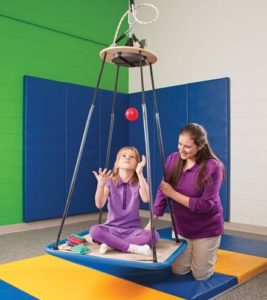
- Riding a rocking horse
- Use of Trampolines
- Sitting on a gliding chair or couch
- Performing gentle stretches
- Riding a swing
- Riding a scooter board
- Balance beam
- Standing or a balance Board
The Proprioceptive System also has an important regulatory role in sensory processing as proprioceptive input can assist in controlling responses to sensory stimuli. This strategy can be very calming for children with sensory stimulation.
Children with autism seek proprioceptive input to regulate their emotional and behavioural responses to sensory stimulation. Some examples for proprioceptive activities are:
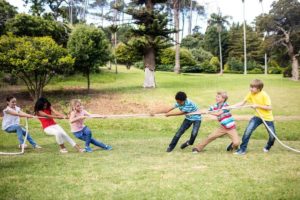
- Lifting weights (tins, books)
- Wheelbarrow walks.
- Squeezing a stress ball
- Moving furniture
- Blowing bubbles, balloons
- Tight Hugs
- Applying deep pressure
- Carrying a backpack with heavy books (or equivalent)
Tactile strategies/input are best for some children as they are hand on learners who love to touch and be touched. Tactile activities are extremely helpful in problems like hand and finger awareness, attention and fine motor planning. Some examples of tactile based activities include:
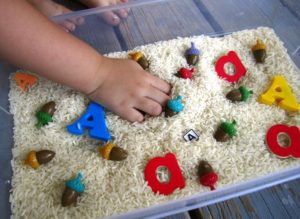
- Hide and seek: Hiding small objects in play, putting small tiny toys into the child’s t-shirt and waiting for their response
- Shaving cream activities (drawing on windows, glass)
- Drawing in sand/salt
- Playing with playdough
- Massages
- Sticky play
- Brushing
- Holding on to or playing with fidget toys
Playstreet believes in a relationship-based approach rather than the conventional approach to develop attention. We understand every child is different and that their attention varies. We use natural interaction to help build attention and help maintain it for the interaction.
Some of the Strategies We Can All Use to Develop Better Attention Include:
- Knowing your Child’s Learning Styles (https://www.playstreet.in/2020/08/04/learning-styles-in-children/) to build attention.
- If a child is a visual learner, then we may have to use a variety of visual cues and materials to grab their attention. This can help them to learn better in a focused manner. Similarly, we could use sensory toys and books to grab a child’s attention. It is, therefore, important to know about the child’s learning style before presenting them with any activities. Having said that, we should try to incorporate different learning styles while teaching children. EG: A visual learner should not always be depended on visual strategies. A mix of visual and auditory cues would help to draw their attention better.
- Maintaining Eye-Contact with the Child During the Activity – For this, the parent or facilitator needs to be at the physical level of the child. This encourages the child to hear you and see you better during the interaction, which in turn brings in more attention towards the parent/facilitator.
- Identifying the Time: Children progress better when they are in a good mood. Some children are active in the morning while others may be active at night. Parents have to choose the best time to teach their kids. This strategy can keep them attentive while performing their tasks.
- Appealing to their Interests: We need to understand the likes and dislikes of the child before we plan any activity or task. An interested child will respond better and will be curious to learn compared to a child who is not interested.
- Predictability of a Task: The more predictable it is for the child, the more prepared they become to what is coming. Parents need to discuss or inform the child about activities prior to the task. This helps build confidence and helps prepare them for the task. Most of the parents expect their child to sit for 45min to an hour for a learning session. However, children need frequent breaks between lessons/activities to keep the brain active and help maintain focus and attention.
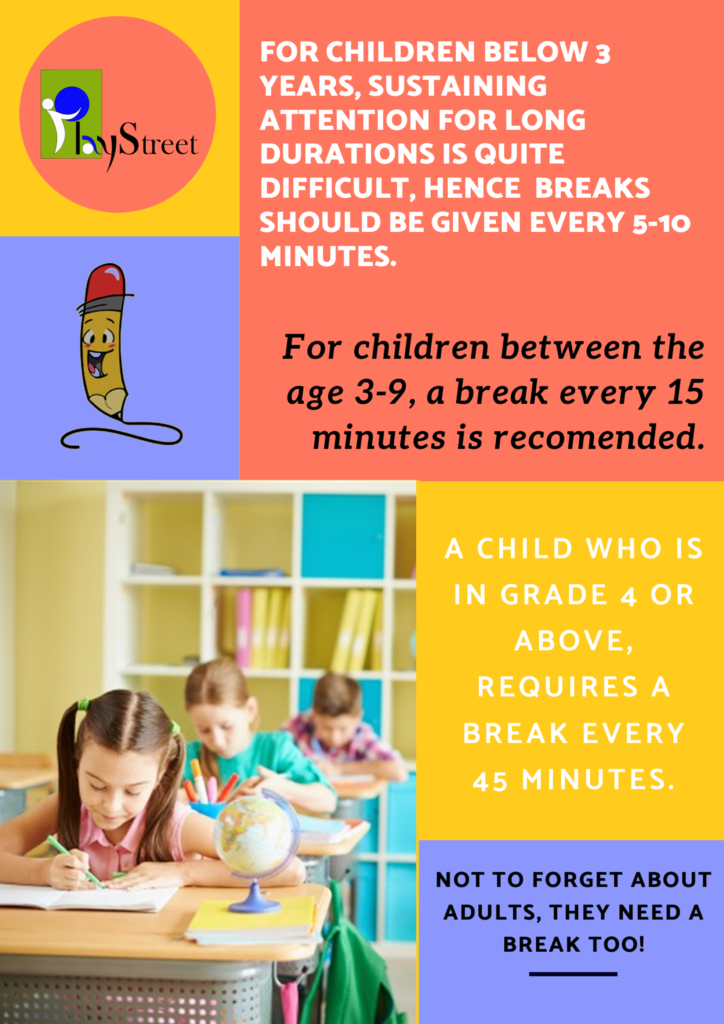
- Repeating Instructions: Sometimes, we keep saying the same instructions again and again – this can disturb the child’s mood and overburden their mental processing. We need to be specific when giving instructions for a task, use simple and clear language and then maintain silence and wait for your child to respond to the task.
- Using Visual Schedules: Visual (with symbols/photos, etc.) are used at PlayStreet during therapy which helps the child communicate his/her need for a break. Sometimes young children are not able to communicate their needs to parents or therapist in a home setting or classrooms, respectively. Few children need a well-planned structure to improve their attention. Therefore, it is important to create a structure for them before we plan for studies or activities.
- PlayStreet follows a visual schedule for all children that results in predictability and preparation for their day. By implementing this method, we show respect to the child and their needs, which eventually motivates them to finish the task. This strategy can also improve their visual attention.
- Choosing your Material: As mentioned before, it is important that every parent/facilitator know the likes and dislikes of their children. Children get distracted easily when they are surrounded by materials like toys, books and crayons or any other visual stimulus that grab their interest. Maintain the area or space with limited resources required for an activity that you choose to work with the child. Make sure there is a good amount of light in your room.
- Providing Guidance in Different Ways using spoken directions, physical prompts and/or by giving feedback to the child. A lot of guidance can also be given through non-verbal communication i.e. through body language, facial expressions and eye gaze. Activities should be planned based on the child’s current understanding and difficulties.
- Using Trial and Error Method – Our children learn better when they are given an opportunity to experiment with tasks on their own. Most children explore and learn from their environment; parents should allow their children to freely explore and learn. This can balance the child’s anxiety level for any challenging activity. It can boost their confidence and also motivate the child to complete the task better.
- Turn-taking games can help promote joint attention. Developmental Psychologists believe that joint attention represents a transition in infant development from observing someone’s action to observing the object of someone’s attention to learning the unique meaning and significance they associate with the object.
- By initiating joint attention, infants learn through co-experiencing, what should and should not be considered significant, as well as the emotional impact typically associated with different stimuli. The important component of joint attention is not that an infant and parent pay attention to the same stimulus. Rather, it is that the child has discovered that he or she can learn about meaning and significance through observing another person’s subjective response to a shared element of their environment.
- We can introduce a task during turn-taking games as this can decrease the difficulty of the child and make it easy for him to complete it and the child receives support and feedback during this time. Joint attention is important for developing social communication and cognitive skills. We can include games like hide and seek, bubble blowing to grab the attention of kids between 3-5 years of age.
- Appreciating your child for completing the task by providing reinforcements can motivate them to be attentive throughout the activity time.
- Removing/Reducing Performance Demands from your child by engaging in an activity that does not necessarily require their participation. In other words, it is the parents that are participating in the activity while the child, who is required to stay in the room, does not have to engage.
-
Many children suffer from performance demand and start avoiding regular engagements too and start perceiving every ‘engagement’ as a demand rather than a happy interaction. However, we have observed amazing things happening when we remove these performance demands. For example, we see children coming over slowly to participate in the activity.
-
A good way to achieve this is to have the communication partner not react at all to the child moving away, to keep playing by themselves and continue with the smiles and eye contact towards the child, and not say anything (saying anything at this time could be immediately perceived as a performance demand).
-
Building Self-Regulation to Develop Attention
One of the most important prerequisites to paying attention to people, the environment and completing tasks at hand is “self-regulation”. A flow of developing self-regulation is given below (this flow is developed based on the RDI™ Program):
Learning to regulate yourself first requires an ability to monitor yourself and have an awareness of yourself. It means that one needs an understanding of when they are moving “off course” and then learning how they can make “course corrections”.
Neurotypical (NT) children do not do much self-regulating prior to 24 months of age, but we do expect them to co-regulate when involved in a framework with an adult guide.
A child needs the capacity to track 2 things at once – taking some action and determining how that action has impacted his/her movement toward a goal or the intended objective.
Self-regulation is about tracking your own actions in relation to some objective. It means that children compare their actions to an internalized representation of how they would like to be acting. However, before children can internalize, they learn to regulate by comparing their actions to their guides’ (like their parents) action through co-regulation.
During the 3rd year in neurotypical development, children begin to compare their actions to an internalized partner.
Unless children develop a high degree of mastery of co-regulation, they are not going to be able to be competent in self-regulation, i.e. A child has to learn to be a co-participant with you before he can learn to self-regulate – It is easier to judge my degree of coordination with my partner compared to judging the degree to which my actions are ideal towards reaching my own goal.
Regulation is a conscious process involving the pre-frontal cortex and implies functioning effectively in a regulatory system (dynamic system). It helps in staying “on course” by making ongoing evaluations and course corrections in a complex system.
Making adjustments is the easy part; the hard part is monitoring our actions to determine whether an adjustment is needed and what kind i.e. when is a change from my desired course sufficient enough to warrant an adjustment, how often do I stop to determine this, how do I keep from forgetting to monitor, how do I not get so caught up in monitoring that I cannot act.
Co-regulation is self-regulation with training wheels.
Your job as a guide is to continuously look for opportunities to practice regulation and to find those critical moments when the child goes off course. If you prevent them from going off course, you eliminate any possibility of learning self-regulation, attention, and intrinsic motivation.
These are some of the strategies used by PlayStreet to build attention naturally in children. We open our platform for kids to explore and learn using an eclectic approach.
If your child has attention problems, it is recommended to seek help at the earliest by consulting an occupational therapist or speech therapist. PlayStreet recommends enrolling families into the RDI Program for developing child’s independence and quality of life.
REFERENCES:
- https://www.griffinot.com/sensory-strategies-and-supports-for-the-classroom
- https://www.playstreet.in/2020/08/04/learning-styles-in-children/
- www.rdiconnect.com
- https://www.playstreet.in/relationship-development-intervention-rdi/
- https://www.playstreet.in/co-regulation-relationship-development-intervention/
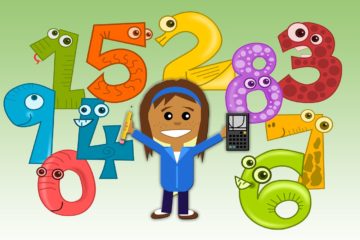


1 Comment
Sowmya · October 13, 2021 at 4:13 pm
My child is diagnosed with Asd, looking for therapy center for OT & Speech.